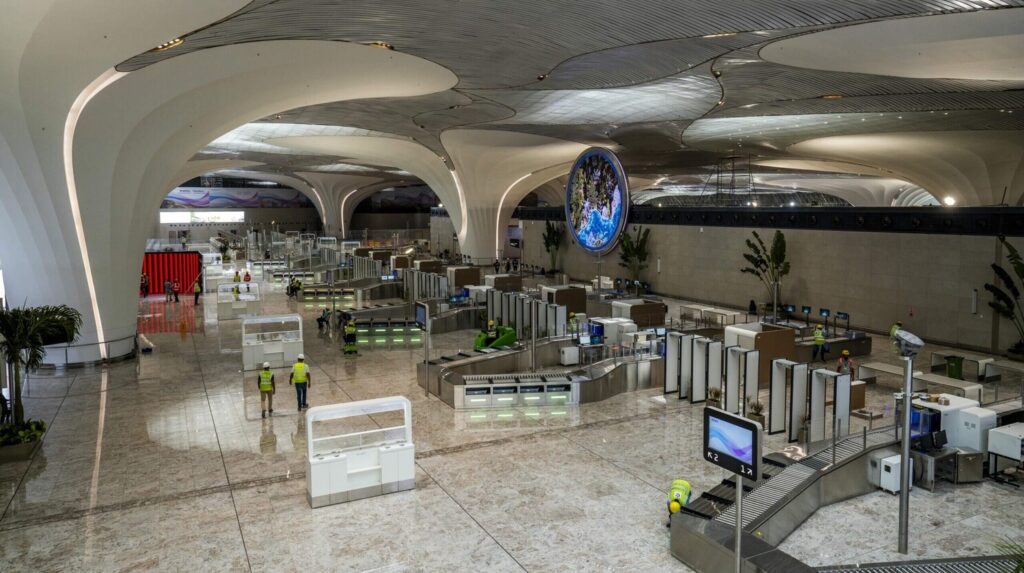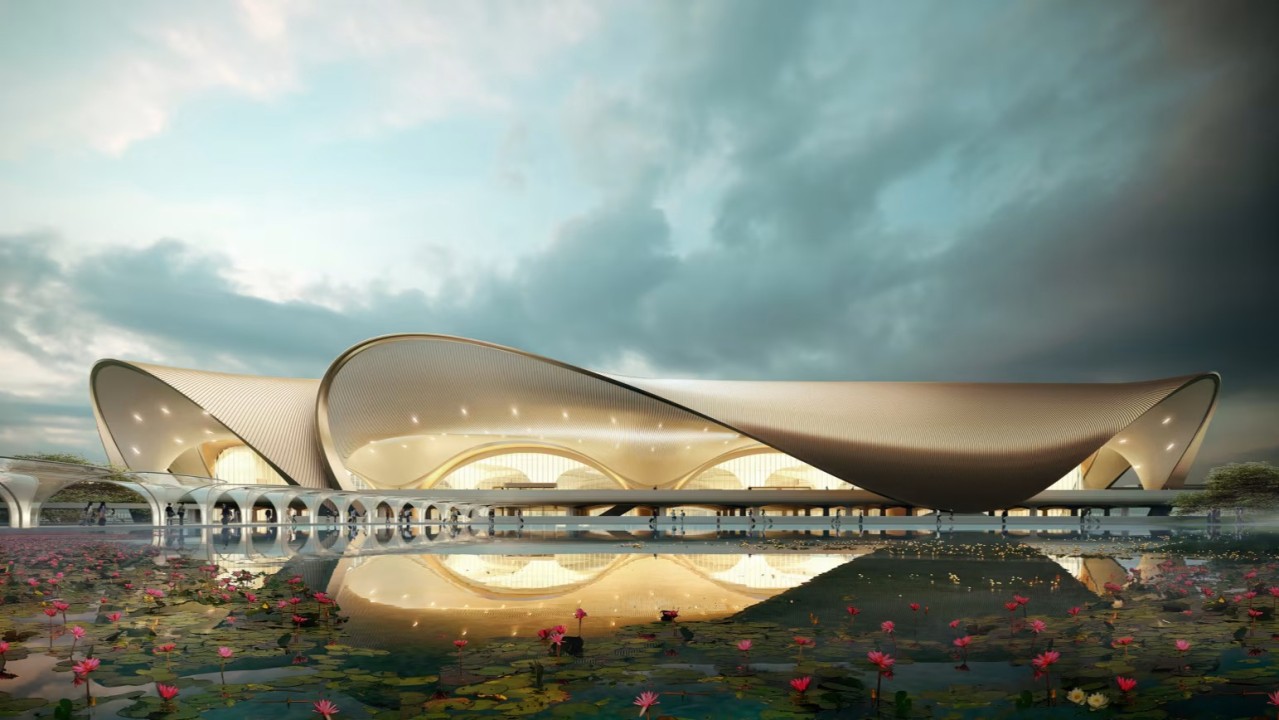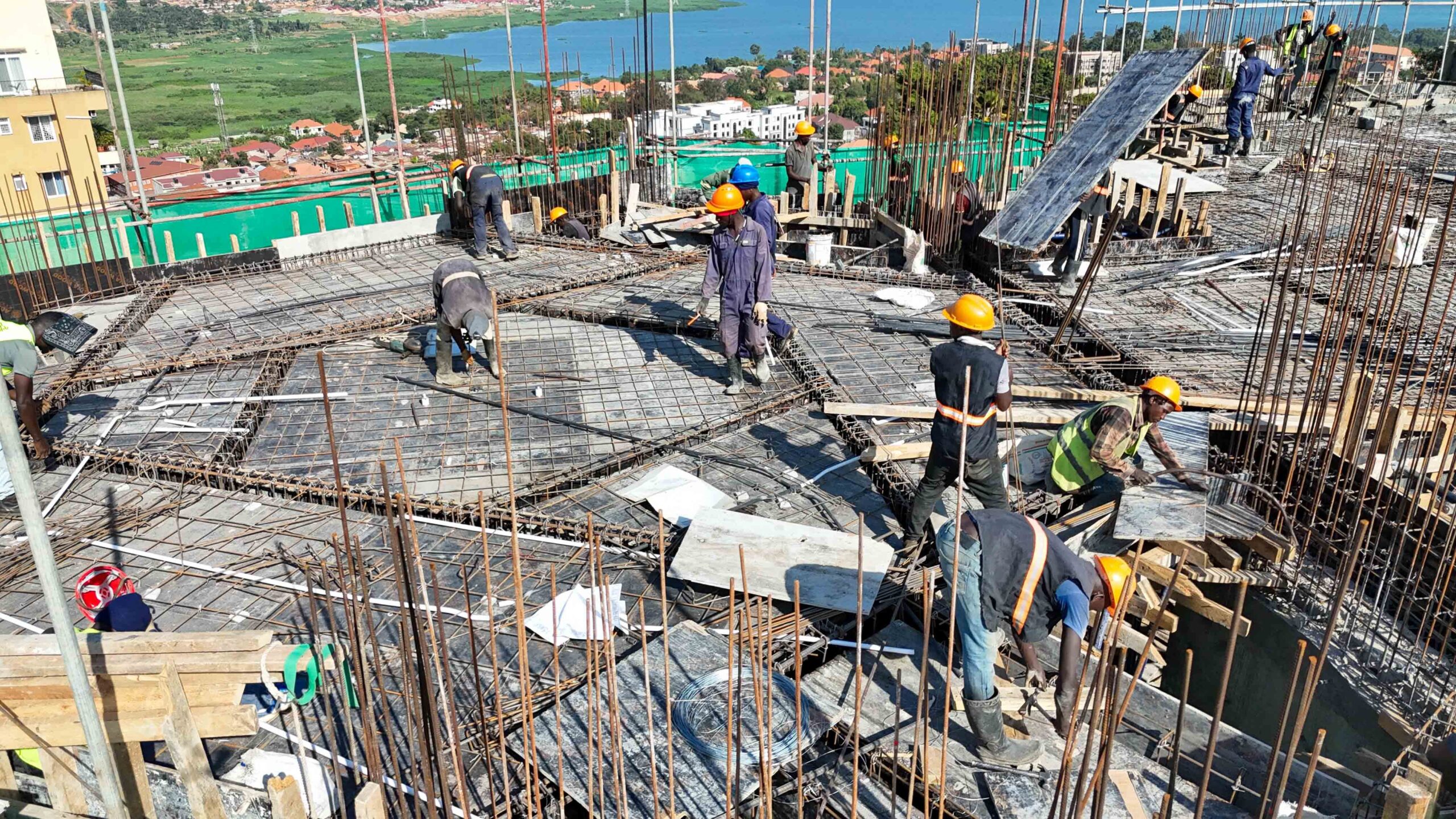The architectural vision for NMIA draws inspiration from the lotus, symbolizing purity and renewal in Indian culture. The airport’s rooflines mimic the unfolding petals of a lotus, creating a sculptural yet functional identity. These forms aren’t merely decorative — they shape daylight entry, define spatial hierarchy, and establish a strong visual connection between structure and landscape.
This fluid, organic geometry gives NMIA a distinctive national identity, positioning it as an airport that feels both global in technology and local in spirit.
Architectural Team & Vision
The architectural vision for NMIA draws inspiration from the lotus, symbolizing purity and renewal in Indian culture. The airport’s rooflines mimic the unfolding petals of a lotus, creating a sculptural yet functional identity. These forms aren’t merely decorative — they shape daylight entry, define spatial hierarchy, and establish a strong visual connection between structure and landscape.
This fluid, organic geometry gives NMIA a distinctive national identity, positioning it as an airport that feels both global in technology and local in spirit.
Architectural Team & Vision
The design was led by Zaha Hadid Architects, renowned for pushing boundaries in fluid, high-performance architecture. The project brings together global and Indian consultants, engineers, and sustainability experts — ensuring that the vision remains both innovative and practically buildable.
Their shared goal: to create an airport that is not just an air travel facility, but a cultural and environmental landmark.
Structure & Spatial Organization

NMIA’s terminal is organized under a series of sweeping, lotus-like roofs supported by flared sculptural columns. These iconic columns act as both structural supports and natural light shafts, reducing the need for excessive artificial lighting.
Key Features:
- Large-span roof systems minimizing internal columns for uninterrupted passenger flow.
- Interconnected terminals designed for modular expansion, ultimately capable of handling up to 90 million passengers annually.
- Runway infrastructure built to accommodate wide-body aircraft, with provision for two parallel runways.
This design ensures flexibility, scalability, and resilience — key for an airport projected to be among India’s busiest.
Material Palette & Lighting Strategy
Material selection at NMIA emphasizes durability, performance, and visual warmth.
- The roof and ceiling systems feature high-efficiency metal panels with integrated skylights to diffuse natural light.
- Glazing systems are shaded by deep overhangs to control glare and heat.
- Interior finishes blend stone, engineered composites, and metal cladding, offering a modern yet timeless aesthetic.
The play of light through the sculptural roof ensures that passengers move through a naturally illuminated, calming environment.
Passenger Experience & Functional Planning
The airport’s layout is intuitive — clear circulation between check-in, security, and boarding minimizes congestion. The design includes expansive plazas, retail zones, and lounges, combining operational efficiency with a sense of openness.
Highlights:
- Seamless vertical separation of arrivals and departures.
- Over 100 retail and F&B outlets in Phase 1.
- Dedicated General Aviation facilities to manage private and business jets.
The goal is to redefine the airport experience — transforming it from a transit space into a destination in itself.
Sustainability & Green Initiatives
NMIA aims to set a benchmark for sustainable airport design in India. Its environmental strategy integrates renewable energy, water management, and passive design.
Sustainable Design Features:
- Solar energy generation planned across rooftops and adjacent land areas.
- Rainwater harvesting and wastewater recycling systems to reduce freshwater consumption.
- Electric ground vehicles and EV charging infrastructure for airside and landside operations.
- Optimized daylighting and ventilation to minimize energy loads.
These initiatives align with India’s broader commitment to net-zero carbon goals and sustainable infrastructure.
Connectivity & Urban Integration
NMIA is strategically positioned to complement Chhatrapati Shivaji Maharaj International Airport and serve the expanding Navi Mumbai region. The master plan integrates:
- Direct road and highway connectivity.
- Metro and rail links connecting to Mumbai’s urban core.
- A proposed Automated People Mover (APM) for seamless inter-terminal transfer.
By connecting air travel with urban mobility systems, NMIA will act as a catalyst for economic and infrastructural growth across the region.
Landscape & Environmental Planning
Built across a 1,160-hectare site, the airport’s landscape strategy preserves natural watercourses and coastal ecology. Extensive green belts, stormwater management systems, and eco-sensitive buffer zones ensure resilience against flooding while enhancing site biodiversity.
The design approach integrates architecture, engineering, and landscape into a cohesive environmental framework — reflecting a new way of building in harmony with nature.
Challenges & Considerations
Despite its visionary design, NMIA faces challenges typical of large-scale infrastructure projects:
- Translating complex parametric forms into cost-efficient construction.
- Balancing rapid urban development with environmental conservation.
- Ensuring a smooth operational transition as airlines and passengers gradually shift from Mumbai’s existing airport.
These challenges, while significant, are balanced by NMIA’s potential to transform regional mobility and urban growth.
The Navi Mumbai International Airport is more than just a new aviation hub — it’s a symbol of India’s architectural ambition, technological evolution, and commitment to sustainability. With its lotus-inspired form, energy-efficient systems, and scalable master plan, NMIA embodies what modern airport design should be: beautiful, functional, and future-ready.
As construction progresses, NMIA is set to redefine how airports in India — and the world — can integrate culture, engineering, and environment into one visionary whole.









